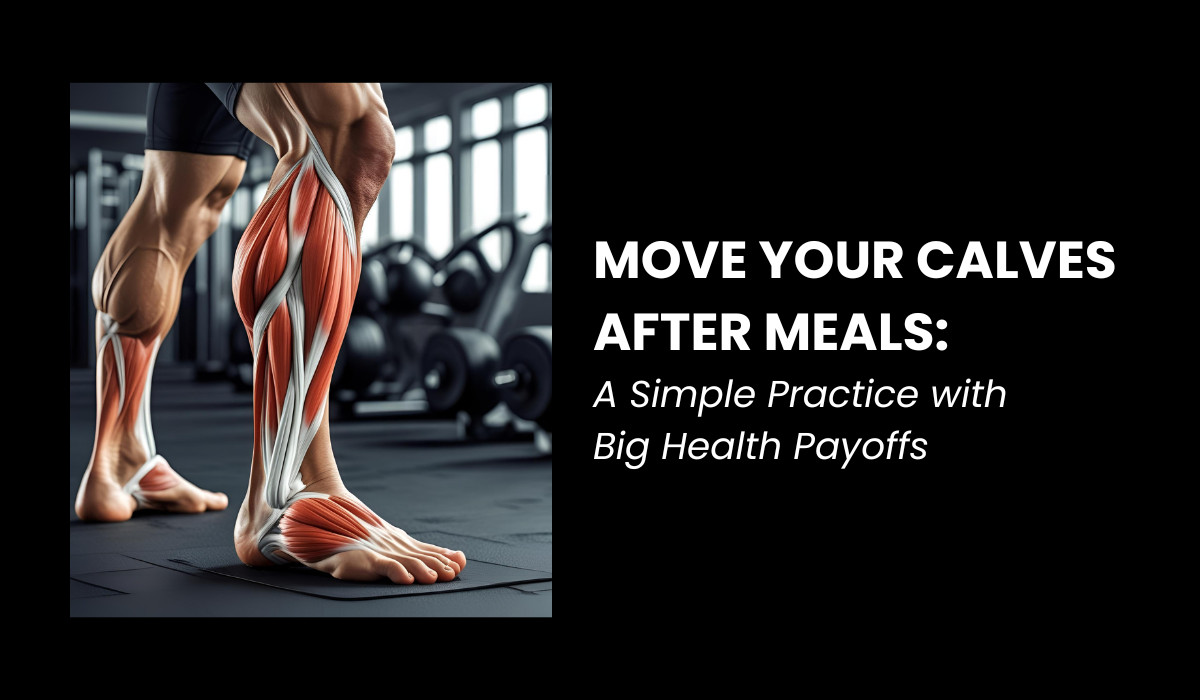We often think that big health changes require gym memberships, fancy diets, or apps that buzz
every 3 hours. But what if just moving your calves after meals could significantly improve your
metabolic health, blood sugar levels, and energy?
Yes, you read that right. Your calf muscles those quiet, often-overlooked muscles in your lower
legs are metabolic powerhouses. Activating them right after eating is one of the easiest and most
effective habits you can build for long-term health.
——————————————————————————————————————————————–
Why Focus on Calf Movement?
The soleus muscle, part of your calves, is unique. According to a 2022 study published in
iScience by Dr. Marc Hamilton’s team at the University of Houston, low-level contractions of
the soleus muscle significantly improve blood sugar regulation and fat metabolism even while
seated.
This concept is known as the Soleus Pushup. It suggests that slow, rhythmic contractions of the
calf muscle can keep glucose levels stable, especially after meals.
Scientific Article – Hamilton et al., 2022, iScience
Key takeaway: Just moving your calves while seated helped maintain blood glucose with
minimal energy expenditure.
——————————————————————————————————————————————–
What Happens After Meals?
After you eat, your blood sugar rises. For people with insulin resistance, diabetes, or prediabetes, this spike can be dangerous. Usually, we rely on insulin or medications to regulate this. But here’s the good news:
Light movement, especially involving large muscles like the calves, can help shuttle glucose into muscles no insulin spike needed.
——————————————————————————————————————————————–
How to Move Your Calves (Practically)
Here are 5 realistic ways to integrate this habit even in a small Indian apartment or a busy work- from-home day:
- Soleus Seated Push-Ups
- Sit upright in a chair.
- Keep your toes on the ground.
- Gently lift your heels up and then slowly drop them.
- Do this for 1-2 minutes every 15–20 minutes after meals.
- Repeat for 10–15 minutes total in the hour after a meal.
- Wall Calf Raises
- Stand near a wall or kitchen counter.
- Raise your heels slowly and lower them gently.
- Try 2–3 sets of 15 raises right after a meal.
- Walk Around the House
- No time? Just walk in your corridor or around your living room for 5–10 minutes after each meal.
- Stair Step Taps
- If you have a step or platform: place your forefoot on it and raise/lower your heel slowly.
- Do this while watching TV or chatting.
- While Brushing or Doing Dishes
- Combine calf raises with another standing task like brushing teeth or cooking. It’s habit stacking 101!
——————————————————————————————————————————————–
Who Should Try This?
- Pre-diabetic and diabetic individuals
- Desk workers
- Elderly individuals with low mobility
- Women with PCOS or hormonal imbalance
- Anyone wanting to improve metabolic flexibility without rigorous exercise
——————————————————————————————————————————————–
Final Word
You don’t need to overhaul your entire lifestyle to start feeling better. Sometimes, it starts with a muscle you didn’t even know could help this much. Your calves might just be your secret health weapon.
So next time you finish a meal, instead of crashing on the couch give your calves some love.
Your future self will thank you.



